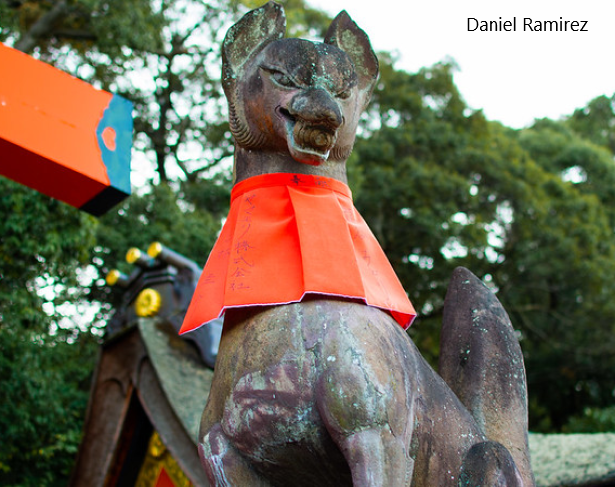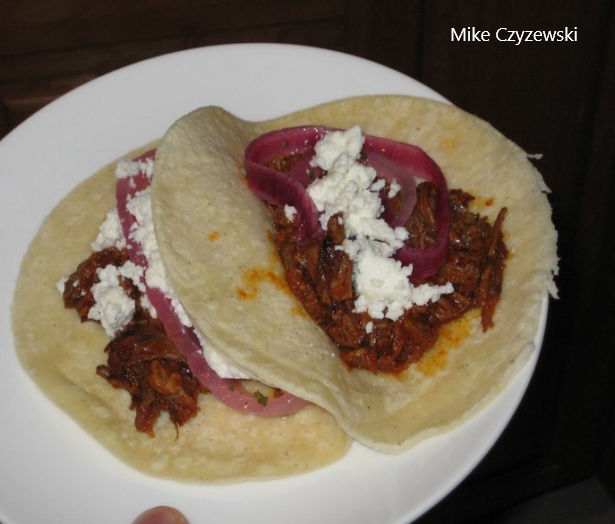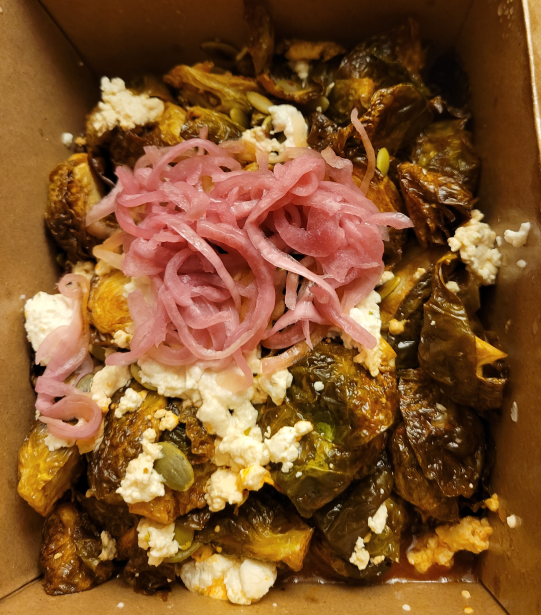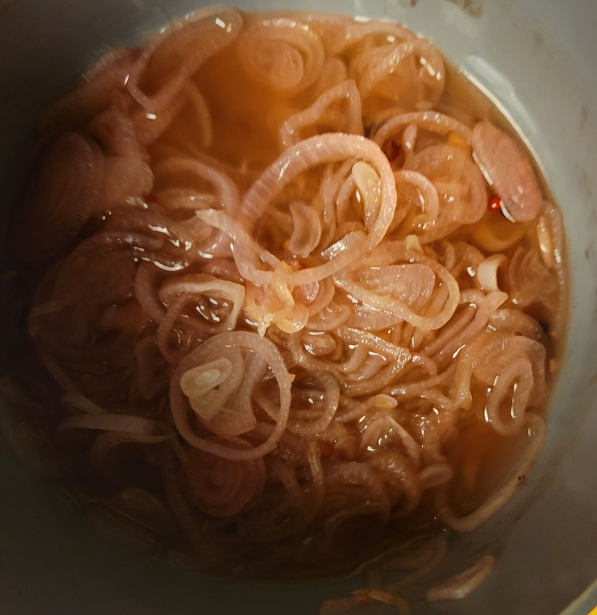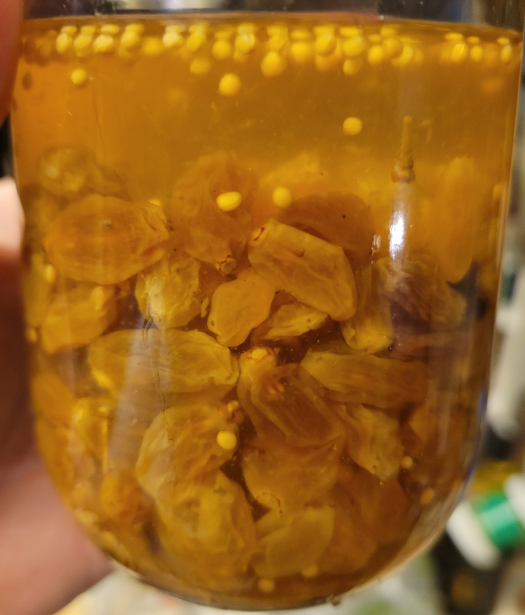KC 297 – HOLIDAY SIDES RETURN, RESTAURANT EDITION

Why hello there, and welcome to Kitchen Catastrophe, where we are once again making Holiday Sides, in honor of (American) Thanksgiving. This time, we’re coming at you with something we don’t do often here on the site: recreations. Specifically, these are two stand-out veggie sides that we think might have some appeal for you all (though admittedly, one will be a little trickier than the other. If you want to skip the chit-chat, and get straight to the eat-at, click this link. For everyone else willing to endure my word-crimes, let’s dig in.
Moshi Moshi, Jesus Desu
Opening with very old memes. Good. Alright, explanations. Some of which I’m certain we’ve already covered before, but it’s late, it’s been a busy weekend, and I don’t look through my archive without drinking for the same reason cars shouldn’t have rear-view mirrors.
YEEEEEEEAAAAAAAAAAHHHHHHHHH!
Anywho, so, the first thing we’re recreating is Moshi Moshi’s Brussels Sprouts, which are deep-fried, tossed in a gochujang sauce, and topped with pepitas, chevre, and pickled shallots. Now, since that explanation traveled through at least five languages, it’s probably going to need a little unpacking.
Moshi Moshi is, as we covered in our Oktoberfest that Wasn’t post, a Ramen place in Tacoma that my family has become QUITE attached to in a very short amount of time: we went there for my birthday, again a week later, and we went AGAIN this month, so we’ve technically gone once a month since we discovered it. For the linguistic nerds: “moshi moshi” is a way to answer the telephone, normally reserved for friends or family these days, though it used to be the standard telephone greeting. Seemingly no one’s 100% certain why, with conflicting theories and ideas: the phrase itself isn’t super helpful, as “moshi”, means something akin to “I will/am speaking”, and repeating it twice doesn’t change that. If it were only ONE time, I’d suggest that maybe a movie where someone answered the phone with “Speaking” got translated into Japanese, and they just thought that looked cool and went with it, but the trend kind of pre-dates most movies. (Though that doesn’t rule out the basic premise: early Japanese operators were trained to say basically “Hey Hey” as a greeting, which was seen as somewhat crude, so they may have copied a response they heard from a military American or Brit answering a phone call…) Other theories suggest it’s because kitsune (foxes/fox spirits) and/or ghosts have trouble repeating words, so the greeting was adopted to ensure tricky spirits couldn’t use telephones to trick people from a distance, or that it’s a elision/corruption of moushiagemasu, a more formal announcement of “I am speaking”. (becoming moushi-masu, and then moshi moshi)
Have you or your loved ones been bamboozled by one of these smug fuckers? You may be entitled to financial compensation.
I kind of blew my linguistic load on moshi moshi, so here’s the rapid-fire breakdown of the rest.
Brussels Sprouts are the oft-reviled (stupidly, in my opinion) mini cabbages. They’re hated because a lot of people over-boil them, producing mushy, sulfurous vegetables. However, when seared, pan-fried, or in this instance, DEEP fried, they’re quite lovely.
Gochujang is Korean pepper paste, and is the Franks Red Hot of Korean cuisine: they put that shit on everything. And in America, it’s the Frank’s Red Hot of making things vaguely Korean or hip.
Pepitas are the Spanish word for pumpkin seeds, and Chevre is a French goat’s cheese.
The dish is kind of fascinating, because the components are so distinct, and yet somehow still harmonious. From an bird’s eye view, “pepitas, pickled shallot/onion, and goat’s cheese” isn’t too weird a combo. If you swapped the chevre for Queso Fresco, you’d have a common trio of toppings for tacos/Mexican stews: pepitas for crunch, onions for acid and snap, cheese for richness.
Looking a little more into it, it seems like ALL THREE tend to only come together on vegetable dishes, wich meat dishes tending toward EITHER pepitas and onions, or queso and onions.
Deep-fried Brussels sprouts are ALSO not too weird, especially tossed in sauce. The OTHER restaurant we’re copying from this week makes them with a hoisin sauce. Other toppings include Chili-Lime Vinaigrette, Maple-Sambal Gastrique, here’s one dusted with Garlic Salt and served with Smoked Chili Aioli. Oh, I’m sorry, if it’s not clear, I’m not making these toppings up: these are real results I’m getting from reading online menus for Seattle restaurants. They’re like…”vegan tater tots”: a crunchy fried snack you can feel a little healthier about. (note: depending on sauce, they may not be vegan. Like, obviously ours isn’t, because of the cheese.
But my mom LOVED them when she first had them, so on our third trip, we didn’t merely buy some to eat, we also bought a box to take home, so that we could deconstruct the recipe and recreate it. We then didn’t open that box for a week.
Hey, other than the shallots losing color, this still LOOKS pretty solid.
I was the only one willing to unpack it, and the results were…not particularly worthwhile. In the sense that the only REAL mysteries (“what’s in their gochujang sauce” and “how do they pickle their shallots?”) weren’t made much clearer at all from the week-old cold taste-test. The only thing it really confirmed is either they have a VERY good shallot supplier, or (I felt) they had to be using red-wine vinegar. My reasoning being based on this.
MORE PINK GOO.
That is a batch of pickled onions I made last month, that I will eventually be uploading to the Patreon. (Have I already mentioned this? I can’t check, because of the aforementioned lack of sober self-reflection.) The important thing to know about those is that the reason they’re so pink is that they’re RED onions, who have had the color stripped from their skin by white wine vinegar. Shallots are not nearly as richly colored, so to get their pickles this red, they have to be using very dark shallots, or the red is coming from the vinegar. (Or, technically, another flavoring agent in the brine/food coloring, but I couldn’t think of any of the former that made sense (They’re not making like, Hibiscus Tea Onions, presumably) and I respected them too much to assume they were tampering with the color artificially.)
In any case, you’re essentially making three mini-recipes, and fusing them all into one mega recipe, Voltron-style. You’ve got to pickle shallots, make gochujang sauce, fry Brussels sprouts, and combine together with pepitas and chevre. (I should note that technically, their version include cilantro and pepper threads as garnish, but Nate hates cilantro, and while pepper threads are cool, they weren’t like, redefining the dish.) So, step one is pickle the shallots. There are a wide variety of ways to go about pickling vegetables or fruits: different balances of vinegar to sugar and salt, different flavoring agents, etc. Literally all three of my recent pickling recipes do it vaguely differently. For this one, we went with a “boil together” methodology (Basically: you can either boil the brine and pour it over raw veggies/fruit, OR you can bring the brine and the veggies to a boil together, then let them cool.)
For this one, based on the flavor profile we got from their shallots (more salty than sweet or tart), we decided to swap the ratios of salt and sugar in another recipe we found, but keep the extra flavoring agents of peppercorns and bay leaves. After bringing to a simmer, you’ve got this.
MORE OF A ROSE COLORED GOO.
I think we might have wanted to reduce the water in the brine, since that (obviously) dilute the vinegar, making the color less vibrant.
Next up, you make gochujang sauce, often called chogochujang, which refers to a semi-specific mixture of vinegar, gochujang, sesame oil and sweetener. IF that sounded weirdly vague, it’s because sometimes the sweetener is rice wine, sometimes it’s honey, sometimes it’s sugar, etc. It’s basically just “runny gochujang”.
Technically, “Sweet and tangy” runny gochujang
Lastly, you fry the sprouts. This is the part that makes it problematic for cooking on Thanksgiving, since deep-frying is often a tricky system that takes time and attention. My family says we’re planning on doing it, so I’ll let you know how it goes. The first time, we did it in a wok, since that catches most of the splattered oil. Which there will be a non-zero amount of: Brussels Sprouts hold and hide a lot of water, so they’re going to bubble like crazy when they go in. Now, technically, the recipe I was using calls for frying for around 5 minutes at 350 degrees, but my mother put herself in charge of the process, and she doesn’t do things like “temp her oil”. So the first batch fried in somewhere around 45 seconds, and were already pretty well toasted.
That’s a lot of char.
A couple more batches, some temp fluctuations, and we tossed the sprouts in the sauce, and some chevre. Which turned out to be a bit of a mistake/variation: once we did it, the way the chevre broke down into the gochujang sauce made it clear that they definitely just sprinkle it onto the sprouts after tossing them in sauce. Sprinkle on pepitas, and top with a little tangle of pickled shallots.
You can see that the sauce is lighter, and thicker, because the chevre got kind of whipped through it as it was tossed.
The result is…definitively NOT the same as Moshi Moshi’s, but also definitely in the right neighborhood. Everything was CLOSE, and the result was still pretty good (indeed, as mentioned, I believe we’re planning to replicate the dish this Thanksgiving, we enjoyed it so much.). So I have no trouble recommending you give it a try.
ON TO THE NEXT SIDE, where we get sweet and sassy. I already regret writing that.
The Apple of My Eye
This was a late addition to our plans/this post, with an interesting purpose. See, either Friday or Saturday, I was watching a video with Saimin Nosrat, famed author of Salt, Fat, Acid, Heat. And she was discussing how, from a culinary point of view, Thanksgiving dinner in a lot of homes is…terrible. Or crazy, depending on how you want to look at it. Specifically, the point was that some of the fundamental instructions on how to balance meals/plates just…stop mattering. Like, here’s a fairly typical Thanksgiving spread: roast turkey, stuffing, mashed potatoes, gravy, green beans, dinner rolls, cranberry sauce and pumpkin pie. Right? Everyone agrees that’s fairly normal? So let’s break down the textures and flavors of that line-up: soft and meaty, soft and savory, soft and starchy, literally just “meaty liquid”, depends on how you cook them but probably soft, soft, sweet and fruity, and soft and sweet. There is NO textural contrast or acidity. Saimin used the example to highlight that she’s pretty sure that’s why people care so much about cranberry sauce: it’s the ONLY acidic thing on the table in a sea of salty softness.
Which isn’t a BAD thing, it just calls out for contrast.
As such, I was mildly motivated to think about “how can we add more texture and acidity to the thanksgiving table?” and while we were going over the menu with my grandparents, our recent trip to Lady Jaye came up. Specifically, my mother noted that the fresh apples we were eating from my grandfather’s tree would be good in their shaved apple salad. A salad consisting of thin slices of apple, celery, and pickled raisins tossed in a vinaigrette. That’s…acidity, sweetness, and textural contrast. It’s literally everything we could hope for.
It’s really easy…other than two semi-irritating details. Firstly, pickling the raisins means it’s another “you need to make this one simple recipe in order ot make the other one”, and two…sherry vinaigrette. The recipe from Lady Jaye’s uses a sherry vinaigrette, meaning you need a sherry vinegar. Which I know we HAVE: I’ve made dishes with sherry vinegar before. I specifically know we’ve picked up Pedro Ximenez sherry vinegar (Pedro Ximenez is a specific kind of sherry grape), based solely on the grounds that several years ago, my mother had short-ribs in a glaze built on a PX reduction, so for a year or two, I was hyper-alert to any mention of the sherry. BUT, in the numerous cleanings and re-arrangings of the components of our house, the sherry vinegar as gone missing. A fact I did not discover until we had already committed to the recipe. In any case, we made pickled golden raisins via the “boil and pour” method, mixing a brine of white wine vinegar, sugar, and mustard seed.
Now THIS feels like a classic “I promise you, this is a success.”
Then I made a VERY simple “sherry vinaigrette” by mixing 1 tbsp of sherry and 1 tbsp of rice vinegar with 3 tbsps of olive oil and lightly seasoning it with salt. I think, personally, the acidity here could be dialed up. Like, a lot of sites recommend if you can’t get sherry vinegar, just straight up replace it with rice wine vinegar, and I think adding the straight sherry really dropped the acidity of the vinaigrette into something less punchy. (Note that, technically, you could call this “SASS” Salad, for “Shaved Apple Sherry Salad”, thus justifying my earlier use of “sassy”. You could also just call it Sassy salad, but I can’t morally condone that. SASS was enough of a reach.)
In any case, you’ll also want to use a mandoline to thinly slice some ‘sheets’ of apple, that we then cut into halves, and combine it with some match-sticked celery and some chopped parsley.
I apparently only took pictures of the scraps of the vegetables. That doesn’t show a great level of personal interest in vegetables.
The recipe is notable somewhat scalable: the original recipe is intended for 4 people, based on 2 apples, but we scaled it down for a single apple test run, and I’m sure it could be scaled up based on the number of people and apples. Once you’ve got everything chopped and the vinaigrette whisked, toss the fruit, veg, and dressing together, sprinkling with a couple pickled raisins and some crumbled feta for a little bit of cheese/richness.
My main complaint with this picture is that I CANNOT see that slice of apple skin near the middles as anything other than a cherry tomato, and it maddens me. I KNOW it’s apple, but still the doubt lingers.
Like I said before, I think we under-delivered the acidity of the dish. The one we produced here was FINE, but it wasn’t as punchy as the one we had at Lady Jaye’s. But this is very mutable creation: I modified an existing recipe from Curtis stone, who flavors his with more Spanish flavors (almonds and manchego cheese) and apple cider vinegar. You could easily riff on it with say, walnut oil, and chopped walnuts, or a little thyme to make it feel more seasonal. Our recipe here is really just a foundation.
But with that, we had two different vegetable sides you might consider adding to your Thanksgiving table. The Brussels sprouts will be harder, but have a much bigger “wow factor”, while the apple salad is pretty easy to throw together, ESPECIALLY if you pickle the raisins beforehand: we made a double batch on Sunday, so now Thursday it’ll purely be chopping, whisking and tossing. (Note that our recipe for pickled shallots ALSO makes far more than are needed to top the Brussels sprouts, so you could easily whip up either or both Today/Tuesday, streamlining the potential dishes for the day of.) I honestly stand by both recipes, which, while not technically O’Guin ‘classics’, are solid recreations and probably legally distinct enough to classify as (at least semi-) originals.
THURSDAY: WE’RE COVERING A THANKSGIVING SPECIAL. JON DOES NOT KNOW WHICH ONE, BUT HE’S GOT LIKE…48 HOURS TO FIGURE IT OUT AND WRITE IT UP. `PLENTY OF TIME. (HE SAID, PANIC IN HIS VOICE.)
MONDAY: WE’VE ACTUALLY MADE LIKE, THREE POTENTIAL RECIPES. IT MIGHT BE CHINESE INSTANT-POT BEEF, IT MIGHT BE “BREAD” YOU CAN USE AS A WEAPON, OR IT MIGHT BE SOMETHING ELSE. TUNE IN THURSDAY TO FIND OUT.
Here's the
Recipes
“Moshi Moshi Style” Fried Brussels Sprouts
Serves 4-6
Ingredients
Pickled shallots
2 Shallots
1/3 cup red wine vinegar
1/4 cup water
1 teaspoon salt
1 teaspoons sugar or honey
1 teaspoon peppercorns
1 bay leaf
Gochujang sauce
3 tbsps Gochujang
3 tbsps Rice wine vinegar
1 tbsp honey
1 tbsp Sugar
1 tsp sesame oil
Brussels sprouts and toppings
2 pound Brussels sprouts, trimmed of stems, outer leaves peeled, and cut in half
2 ounces Chevre
2 tbsp Pepitas
Oil for frying
Preparation
Pickle the shallots: Thinly slice the shallots, and combine with all other ingredients in a small saucepan. Bring to a boil, remove from heat, and let cool, covering with a paper towel pressed to the brining liquid.
Make the gochujang sauce: Whisk together all ingredients.
Heat the oil to 350 degrees in a large saucepan, wok, or deep-frying mechanism of your choice and desired level of safety. Fry the Brussels Sprouts in batches, moving to a paper-towel lined plate as they finish. (the process SHOULD take around 5 minutes per batch, but oil can be finicky, so keep an eye on it.)
Toss the Brussels sprouts in a large bowl with the sauce. Move to a platter, and crumbling over chevre, and sprinkling with pepitas. Top with 2-3 tbsps of pickled shallots. Serve.
Shaved Apple Sherry Salad (SASS)
Serves 4
Ingredients
Pickled Golden Raisins (Sultanas, if you’re nasty/British)
1 cup golden raisins
1 cup white wine vinegar
½ cup sugar
1 tsp mustard seed
Vinaigrette
2 tbsp Sherry Vinegar
3 tbsp Olive oil
1 tsp sugar or honey
Pinch of sea salt
Salad
2 Honey Crisp apples
¼ cup celery, cut into matchsticks
2 tbsp chopped fresh parsley
1 ounce feta cheese
2 tbsp pickled golden raisins (recipe above)
Preparation
Pickle the raisins: place raisins in a glass jar. Whisk other pickling ingredients together in a small saucepan, bringing to a boil over medium-high heat. Pour into the jar over the raisins, stirring with a fork to ensure liquid coats all raisins. Let cool.
Whisk sugar/honey with vinegar. Continue whisking while drizzling olive oil into mixture in a thin stream to emulsify.
On a mandoline, or with a sharp knife, cut apples between 1/16th and 1/8th inch thickness (2-3mm). Cut disks in half. Toss with all ingredients other than pickled raisins and feta. Sprinkle with feta and raisins, and serve.


